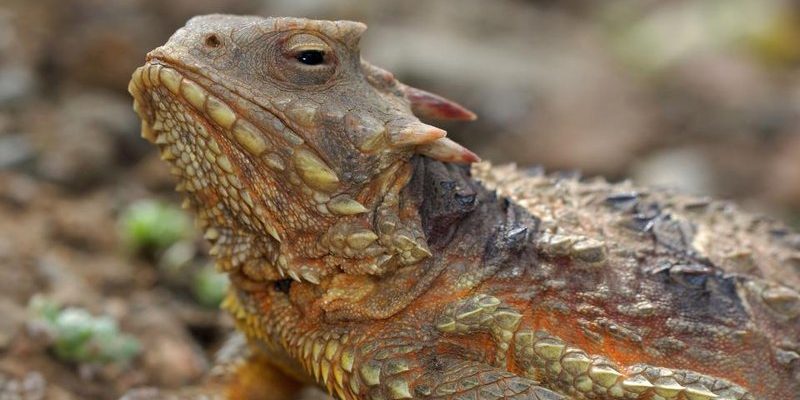
You might have heard that horned lizards can squirt blood out of their eyes. Strange, right? Or maybe you’ve found yourself wondering if they actually eat ants exclusively. There’s a lot of misinformation floating around, and it’s time to separate fact from fiction. Let’s dive into some of the most common myths and misconceptions about horned lizards, shedding light on who they really are and what they do.
Myth 1: Horned Lizards Only Eat Ants
One of the most persistent myths about horned lizards is that they only eat ants. While it’s true that these lizards do love munching on ants, their diet is a bit more varied than that. Just like a good buffet, they enjoy a range of foods.
Horned lizards primarily feast on insects. Their diet can include:
- Ants
- Beetles
- Moths
- Grasshoppers
So, while you might spot a horned lizard chomping down on ants in your backyard, don’t be surprised if you see it hunting for other insects too. The misconception stems from their impressive ability to hunt ants, as they can often be seen amid ant colonies.
Myth 2: They Can Kill You with Their Blood
Another wild myth is that horned lizards can shoot blood from their eyes to defend themselves and that this blood is poisonous. Honestly, that sounds like something out of a comic book! Here’s the thing: while horned lizards can indeed squirt blood from their eyes as a defense mechanism, it’s not lethal.
This unique trick helps them escape predators by creating confusion. The blood comes from the very areas around their eyes—allowing them to make a quick getaway. But don’t worry, the blood is harmless to human beings. It might be a weird party trick, but it’s all in good fun, not a dangerous weapon.
Myth 3: Horned Lizards Can Regenerate Their Limbs
You may have heard about some reptiles being able to regenerate lost limbs, like certain species of salamanders. But horned lizards don’t have that superpower. If they lose a leg or tail, you won’t see it growing back.
Instead, horned lizards rely on their clever camouflage as a means of protection. They blend into their surroundings, making it hard for predators to spot them. This is their real survival tactic, rather than attempting to regrow lost body parts. So, while they can’t regenerate, their unique adaptations keep them thriving in their desert habitats.
Myth 4: All Horned Lizards are the Same
You might think that all horned lizards look alike, but in reality, there are multiple species, each with its own quirks and traits. For example, the Texas horned lizard has a distinctive flattened body and prominent horns, while the greater horned lizard sports more pronounced spikes and a different color pattern.
Depending on where they live, their physical characteristics can change, enabling them to adapt better to their environments. Plus, they can vary in size, color, and behavior. So, if you see one horned lizard, remember that it might not be representative of the whole group. Just like how we humans come in all shapes and sizes, so do these unique lizards!
Myth 5: Horned Lizards Are Dangerous Pets
If you’re considering a horned lizard as a pet, you might be worried about aggression or danger. The good news is that horned lizards are generally quite docile. Sure, they may not be as cuddly as a puppy, but they won’t bite unless provoked.
If you provide a safe, comfortable environment for them, they can be a great addition to a reptile enthusiast’s collection. Remember, though, that they have specific habitat needs, such as room to roam, proper heating, and a varied diet. It’s essential to do your research before bringing one home, ensuring you can meet their needs and keep them healthy.
Myth 6: Horned Lizards are Rare and Endangered
While some horned lizard species have faced threats due to habitat loss and climate change, not all of them are endangered. The most common species, like the North American horned lizard, can still be found in many areas.
That being said, it’s important to keep an eye on their populations. Conservation efforts are critical for those species facing decline, but many horned lizards are not as scarce as you might think. Supporting local wildlife and preserving their natural habitats can help ensure that these quirky lizards continue to thrive.
Myth 7: Horned Lizards Don’t Need Water
You may have come across the idea that horned lizards can survive without water. While they are pretty adapted to arid environments, they still need hydration like any other living creature. Horned lizards get moisture from their food and can even drink water when available.
In fact, providing clean water sources is essential for their health, whether they’re in the wild or in captivity. Make sure to give your pet horned lizard access to fresh water so they can stay hydrated and happy.
Wrapping It Up
So, there you have it! Horned lizards are fascinating creatures, often misunderstood due to myths and misconceptions. From their diverse diet to their unique defense mechanisms, they are more than just their spiky appearance. Understanding these lizards better helps us appreciate their role in the ecosystem and encourages responsible care if you decide to keep one as a pet. With the right knowledge, we can respect these quirky little lizards and protect their habitats for future generations. Whether you’re just curious or considering them as pets, there’s a lot to love about horned lizards!

